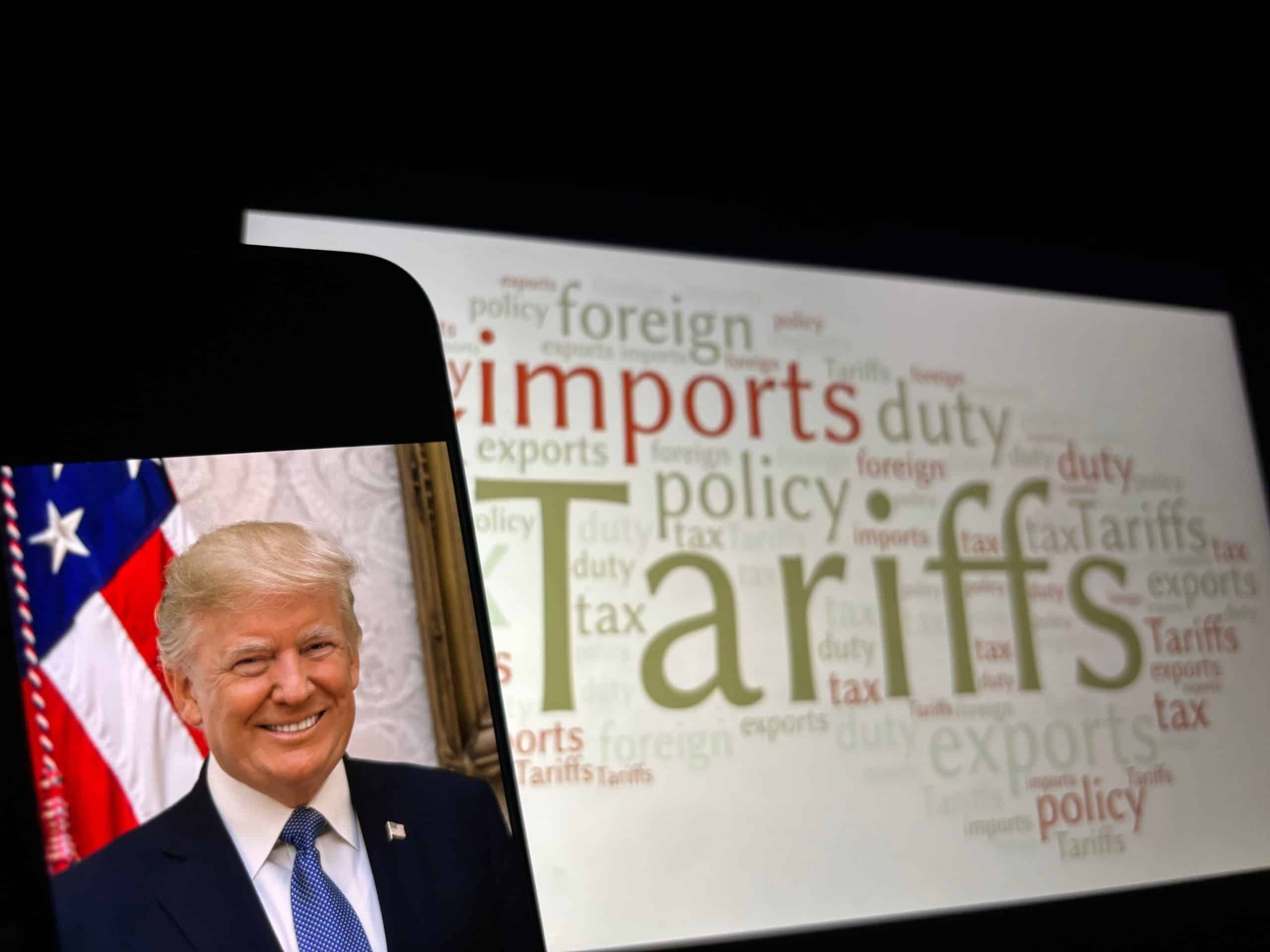The Return of Tariffs—A New Era of Global Trade Uncertainty
This Friday marks a pivotal moment for the world economy as the Trump administration’s suspension of “reciprocal” tariffs comes to an end. Unless new deals are reached, hundreds of goods and dozens of countries could soon face sharply higher tariffs, potentially jolting global supply chains, inflating consumer prices, and sending waves of uncertainty through the financial markets. Over the past year, the U.S. has scrambled to secure new trade agreements with its major partners. Yet, as the deadline looms, only eight countries have finalized deals, leaving major trading partners—including Canada, India, Australia, and Mexico—exposed to a new era of trade tension and punitive tariffs.
The Scorecard: Who’s In, Who’s Out?
Despite ambitions for “90 deals in 90 days,” the Trump administration has managed to sign only eight new trade agreements since April, according to official data. These include deals with the United Kingdom, the European Union, Japan, South Korea, Vietnam, Indonesia, and the Philippines. The majority of America’s largest trading partners—Canada, India, Australia, and Mexico—remain outside any new framework and are facing baseline tariffs that range from 15% to 35% (or higher), if no last-minute agreement is struck.
For these countries, the potential for sudden, sweeping tariffs looms large. The risk is not only higher prices for imports and exports, but also supply chain disruptions, retaliatory measures, and increased global financial volatility.
Examples from the New Deals: UK, Japan, and the EU
The UK was the first to strike a deal, securing a baseline 10% tariff on most goods, with certain sector-specific exemptions for cars and aerospace. Yet, even after a recent high-profile summit between President Trump and Prime Minister Keir Starmer, key issues like digital services taxes and steel and aluminum tariffs remain unresolved.
Japan successfully negotiated a 15% tariff—down from the threatened 25%—in exchange for pledging $550 billion in U.S. investment and expanding market access for American products, notably autos and agriculture. Trump called the deal “the biggest ever signed,” though observers point to lingering gaps in food safety and regulatory matters.
The European Union secured a 15% baseline tariff after difficult negotiations, avoiding the original 30% threat. The agreement drew internal criticism, with French leaders calling it a “black day” and a concession to U.S. pressure, even as it offers key auto and pharma industries a lifeline.
Asia-Pacific: Fast-Track Reductions—But Uncertainty Remains
Vietnam, Indonesia, and the Philippines moved quickly to sign deals, securing lower tariffs: Vietnam dropped from 46% to 20%, Indonesia from 32% to 19%, and the Philippines saw a minor cut to 19%. However, issues around “transshipment”—the practice of routing goods through third countries to avoid tariffs—remain contentious, and U.S. authorities are likely to impose strict monitoring.
Canada, Mexico, India, and Australia: On the Brink of Conflict
Canada, America’s largest trading partner, has not yet reached a deal and now faces a looming 35% tariff, with Trump warning of even higher rates if Ottawa retaliates. Mexico is looking at a 30% tariff, under threat of additional penalties tied to drug trafficking and immigration concerns. India faces a 25% tariff plus further “punitive” measures for its defense ties with Russia and trade practices considered unfair by Washington. Australia currently enjoys a 10% baseline tariff but may see that rise to 15%–20% without a new agreement, due to its trade deficit with the U.S. and unresolved issues.
China: No Deal, Only Suspensions—Potential for Escalation
China, the world’s second-largest economy, has not signed a new deal with the U.S., relying instead on a series of short-term suspensions and partial “ceasefires.” Following cycles of tit-for-tat tariffs as high as 145%, a temporary arrangement now holds, but any failure in talks could spark a new round of trade hostilities, impacting not only technology but also cars, medical equipment, and consumer goods.
Economic Analysis: What’s at Stake for Markets, Prices, and Growth?
For most countries, failure to reach an agreement means immediate and substantial increases in import/export costs, threatening economic growth, disrupting supply chains, and fueling inflation. For the U.S., the risk is retaliatory measures that could raise domestic prices, weaken export demand, and trigger job losses as global trade slows. For China, Canada, India, and Mexico, the coming days will test their bargaining power, resilience, and ability to adapt to a less predictable trading environment.
Two Models in Conflict: Bilateralism vs. Free Trade
Trump’s approach marks a return to bilateral deals and heavy-handed negotiation, moving away from the multilateral, rules-based model of the WTO. While bilateralism offers the U.S. leverage, it also fosters uncertainty, encourages countries to adopt protectionist strategies, and leaves global companies struggling to adjust to rapidly shifting policy landscapes.
Strategic Analysis: Winners, Losers, and the New Trade Order
The handful of countries that reached deals have avoided the worst—at least for now. The rest face the prospect of higher tariffs, slower growth, and market instability. Global companies warn that the new uncertainty will raise costs, complicate supply chains, and dampen investment. The next few months may see more rushed agreements, policy backpedaling, or, if conflicts escalate, the return of a full-blown trade war.
Comparison, examination, and analysis between investment houses
Leave your details, and an expert from our team will get back to you as soon as possible
* This article, in whole or in part, does not contain any promise of investment returns, nor does it constitute professional advice to make investments in any particular field.
To read more about the full disclaimer, click here- orshu
- •
- 7 Min Read
- •
- ago 3 hours
 THE AMERICAS MARKET CLOSES IN THE RED, DRIVEN BY BROADER SELL-OFF
THE AMERICAS MARKET CLOSES IN THE RED, DRIVEN BY BROADER SELL-OFF
The final trading session of the week for the Americas' markets saw a broad decline, as a wave of selling
- ago 3 hours
- •
- 7 Min Read
The final trading session of the week for the Americas' markets saw a broad decline, as a wave of selling
- orshu
- •
- 6 Min Read
- •
- ago 5 hours
 U.S. Labor Market Weakens Sharply: Job Growth Disappoints, Prior Data Revised Down Heavily
U.S. Labor Market Weakens Sharply: Job Growth Disappoints, Prior Data Revised Down Heavily
The latest U.S. jobs report paints a troubling picture of the labor market's momentum. The economy added just 73,000 jobs in
- ago 5 hours
- •
- 6 Min Read
The latest U.S. jobs report paints a troubling picture of the labor market's momentum. The economy added just 73,000 jobs in
- orshu
- •
- 7 Min Read
- •
- ago 6 hours
 USA Rare Earth (USAR): A Strategic Bet on America’s Critical Mineral Independence
USA Rare Earth (USAR): A Strategic Bet on America’s Critical Mineral Independence
Initiation with a $16 Price Target — What's the Rationale? Cantor Fitzgerald has initiated coverage on USA Rare Earth (Ticker: USAR) with
- ago 6 hours
- •
- 7 Min Read
Initiation with a $16 Price Target — What's the Rationale? Cantor Fitzgerald has initiated coverage on USA Rare Earth (Ticker: USAR) with
- orshu
- •
- 6 Min Read
- •
- ago 6 hours
 ExxonMobil Q2 2025 Earnings: Operational Strength Amid Net Income Decline
ExxonMobil Q2 2025 Earnings: Operational Strength Amid Net Income Decline
ExxonMobil (NYSE: XOM) released its Q2 2025 earnings report, highlighting robust operational metrics and continued cost efficiencies, despite a notable
- ago 6 hours
- •
- 6 Min Read
ExxonMobil (NYSE: XOM) released its Q2 2025 earnings report, highlighting robust operational metrics and continued cost efficiencies, despite a notable












